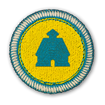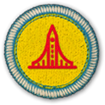Til hamingju is Icelandic for congratulations.
Now you have learned the A-Ö of Iceland and completed all of the regional classes. Hope you had some fun!



Akranes is a pretty port town a stone’s throw north of Reykjavík. Its history began with two 9th-century Irish settlers, and by the mid 17th century it began to form as a fishing village. Today, it is home to around 6,600 people.
The town is known for its photogenic lighthouses, the larger of which doubles as a tourist information centre, and also as a venue for art exhibitions and concerts. There is also a nice sandy beach, Langisandur, and the Akranes Folk Museum, both of which are popular spots for families. Akranes is easy to reach by car or bus, and there’s also a ferry from Reykjavík that takes about 25 minutes.


Álftafjörður is a fjord in the northeast of Snæfellsnes. Its name means “swan’s fjord”, as it is home to hundreds of Whooper Swans that are attracted there by the plentiful seagrass that grows around its shores.
This aquatic plant, known eelgrass or seawrack, is common around the West Iceland coastline and is also the favourite food of several other species of waterfowl, including the Brent goose, a handsome black, white and grey bird that visits the Faxaflói bay area for a few weeks during spring and autumn.


Situated about 2 km from Borgarnes, Borg á Mýrum was the farmstead of Viking Age poet Egill Skallagrímsson, who is the main character in Egil’s Saga. This famous family saga takes place between around 850 and 1000, and tells the tale of Egill’s life and lineage.
Similarities with Snorri Sturluson’s Heimskringla leads many scholars to believe they were written by the same author. Egil’s Saga is brought to life at the Settlement Centre in Borgarnes, and you can learn all about the life of Snorri Sturluson at the Snorrastofa museum in Reykholt.


The Deildartunga hot spring is a powerful geothermal source close to Reykholt. This potent spring has the highest flow rate of any hot spring in Europe, piping 180 l per second of 97°C water to heat the homes of Akranes and Borgarnes. The pipeline to Akranes is 64 km long, and the water is still a steaming 78–80°C when it reaches the town. A new geothermal bath facility called Krauma was opened in the area in October 2017.


Auður djúpúðga, (Aud the deep minded) Iceland’s best-known female settler, was brave, noble and generous. Following the death of her son, viking chieftain Thorstein the Red, Auður commissioned the construction of a ship, which she then captained on its sail to West Iceland. She settled in the valleys of Breiðafjörður, giving land to all of her crew. Auður was also one of Iceland’s first Christians and erected crosses on a hill so that she could pray. This hill, now known as Krosshólaborg, is considered holy, and in 1965 women in Dalir set up a stone cross in honour of Auður. The remains of Auður’s farm can be seen nearby.


Snorri Sturluson (1179–1241) was a renowned poet, scholar and politician, and is one of Iceland’s most important historical figures. His influential writings include the Prose Edda and Heimskringla, and many scholars also believe him to be the author of Egil’s Saga.
Snorri settled in Reykholt in 1206, and today the area has various historical sites connected to his life there. Visitors can learn all about his legacy at the excellent Snorrastofa cultural centre, which is situated at the site of his old homestead in Reykholt.


Every year in September and early October, Icelanders all over the country don their woolly sweaters and head out on horseback for réttir, the annual round-up. Sheep have been grazing in the mountains all summer, so everyone must pitch in to herd them down to be sorted and sent back to their respective farms.
Everyone lends a hand, and it’s not uncommon to see young kids wrangling sheep like seasoned pros. Of course, all that herding is no small feat, so at the end of the day it’s time to celebrate with singing, dancing, and some well-earned beers.


Some say the islands of Breiðafjörður are uncountable, but the more practical-minded estimate there are around 2,800. The largest of these is Flatey, (flat island) which is around 2 km long and 500 m at its widest. It is also the bay’s only inhabited island, though just barely – it has just five permanent residents, plus a few summer dwellers and a handful of sleepy sheep.
Flatey is picturesque and wonderfully peaceful, with colourful old houses overlooking views towards to ocean and mainland, and rich birdlife soaring above. A ferry runs regularly from Stykkishólmur to Flatey before carrying on to Brjánslækur in the Westfjords.


The Icelandic goat is an ancient breed that dates back to the times of the first settlers, who brought them to Iceland over 1,100 years ago. The goats are endangered, though recent breeding efforts have brought their numbers up from a low of 90 animals to over 800 today.
This success is in large part due to the efforts of the Icelandic Goat Centre at Háafell farm in Borgarfjörður, where you can meet the goats and buy a range of goats’ milk products. The Háafell goats gained worldwide attention after appearing in an episode of Game of Thrones. Thankfully, this rise to stardom has not gone to their heads, and they remain as friendly as ever.


Hraunfossar, the “lava falls”, are one of Borgarfjörður’s finest treasures. Delicate white rivulets descend over a wide stretch of lava, flowing into the milky-turquoise waters of Hvítá river below.
A short wander upstream brings you to Barnafoss, the “children’s waterfall”, whose name derives from local folklore. Both waterfalls are exquisite at any time of year, though they are particularly striking in early autumn, when the orange of the leaves and lichen contrasts with the icy-blue stream.


Páll Guðmundsson is one of Iceland’s most industrious artists, working from his home-turned-studio in Húsafell to create drawings, paintings and sculptures. He is best known for his work with stones, which include pebble mosaics, boulders carved with faces, and even functioning instruments such as his innovative “stone harp” (actually more like a xylophone). His studio is also an artwork in its own right, reminiscent of a Hobbit home with its rounded doors and turf roof.


Snæfellsjökull is a 700,000-year-old stratovolcano capped with a magnificent glacier. Many believe that the mountain has supernatural powers, a reputation spurred on by its role in Jules Verne’s Journey to the Centre of the Earth, where it serves as the entrance point to a mysterious subterranean world. Though it is not in fact possible to reach the centre of the earth here, a guided tour of the Vatnshellir cave will get you pretty close.


Kirkjufell is a 463 m free-standing mountain close to the town of Grundarfjörður. Its name means “church mountain”, a nod towards its graceful form, which is reminiscent of a cathedral, or perhaps a tall ship.
This striking shape has made Kirkjufell beloved by photographers, and it is surely one of Iceland’s most photographed spots. The mountain is surrounded by beaches and a lovely walking trail, and there is also a pretty waterfall not far from its base.


Eiríksstaðir in Dalasýsla is one of the most important historical spots in Iceland. It is the former homestead of Eiríkur Þorvaldsson, better known as Erik the Red, and his son Leifur Eiríksson (Leif the Lucky), who was the first European to step foot in America. Today, Eiríksstaðir has a replica of the old turf farmstead, and the Viking Age is brought back to life with guides in traditional Viking clothes. It is also possible to see the ancient ruins of the old longhouse, which have been excavated nearby.


Snæfellsjökull is considered to be a holy place, and many believe it to be one of the world’s seven chakras, or energy centres. There are also rumours that it is a favoured spot among visiting aliens, and in 1993 thousands of hopefuls made a pilgrimage to the glacier in anticipation of a UFO landing. Unfortunately, the extraterrestrials must have gotten a little crowd-shy, as they were ultimately a no-show.


The Norwegian House in Stykkishólmur is a beautiful timber house built in 1832 by trader and amateur astronomer Árni Thorlacius. It has been lovingly restored and now serves as a regional museum where you can see how Árni and his family would have lived over 150 years ago. The ground floor also hosts temporary exhibitions of art, culture and history from the area.


In 1940 during World War II, Iceland was invaded by the British. A year later they were replaced by US forces, who would remain in Iceland as a defence force until 2006. The US navy had their main base in Keflavík, but there was also an important operation in Hvalfjörður fjord, which had a harbour and an oil terminal. Visitors can learn about this wartime history at the War and Peace museum at Hlaðir, just a short drive from the Akranes town centre.


There are three things in Iceland that are considered uncountable: the sand dunes in Vatnsdalur Valley, the lakes of Arnarvatnsheiði, and the islands of Breiðafjörður bay. The islands are virtually uninhabited except for a scattering of summer houses, but the archipelago is quite active, with boats fishing the plentiful waters for cod, halibut and redfish.
The bay is also rich in birdlife, with puffins, shags, kittiwakes and eider ducks all common sightings. Particularly lucky visitors might also catch a glimpse of a handsome white-tailed eagle soaring above.


Icelandic sheep are an ancient breed brought by the first settlers in 9th century. They have a rather shaggy, wild appearance, and their wool has maintained unique characteristics much prized by knitters. Their fleece is made up of not one, but two layers: tog, long hairs that are very water resistant; and þel, shorter, softer hairs that make excellent insulation.
The two layers are spun together to create lopi, Iceland’s famous wool. It is possible to learn all about Icelandic knitting at Ullarselið (The Wool Centre) in Hvanneyri, where you can also buy beautiful yarns and the traditional lopapeysa, an Icelandic sweaters made by talented local knitters.


Rhubarb jam is a popular accompaniment in Iceland, sticky and golden brown, and just the right balance of sweet and slightly tart. It is best eaten with thin pancakes, fat waffles, and hjónabandssæla, a traditional tart made with oats, butter and jam. Whipped cream is also optional. Rhubarb jam is not only delicious, the Icelandic word for it is also a lot of fun to say: rabarbarasulta. Just don’t attempt it with your mouth full.


Iceland’s famous sagas take place between the 9th and 11th centuries. They weave intricate tales of family dynasties, blending historical facts with a healthy heaping of creative license. It is therefore unsurprising that in Icelandic the word saga means both “story” and “history”.
West Iceland is rich in both, as many of the Icelandic sagas take place in this area, and it is also the birthplace of some of Iceland’s most important historical figures. This history is celebrated in various museums and landmarks around the region.


Trolls play a central role in Icelandic mythology, where stories of their deeds serve both as warning tales to keep children safe and as a way of explaining the mysteries of the Icelandic landscape. According to legends, these creatures usually travel by night, as during the day the sun turns them to stone.
Unlucky trolls can be seen among many rock formations around Borgarfjörður, where it is possible to make out faces and figures among the gnarled volcanic rocks. Particularly worth seeing is the face at Tröllafoss (“troll waterfall”) in river Grímsá near Fossatún, where a solemn figure appears to guard the falls.


The Settlement Centre is housed in two of the oldest buildings in Borgarnes and features two excellent multimedia exhibitions. The first is the Settlement Exhibition, which tells the fascinating story of how and why the first viking settlers came to Iceland.
The other depicts Egil’s Saga, leading visitors through a maze of key scenes created by talented artists. Both exhibitions use compelling visual effects and audio guides to bring these stories to life. The audio guides are available in 15 languages.


Along the coast of West Iceland the tidal range varies from around 3 m during neap tide, when the moon is a quarter full or three quarters full; to 4.6 m during spring tide, when there is a new or full moon. In Icelandic, the rising tide is called aðfall, while the falling tide is útfall. During útfall around Breiðafjörður bay, it is possible to hunt for delicious blue mussels, which are one of the area’s most popular delicacies.


The West Iceland coast is dotted with beautiful lighthouses of every shape and size. One of the most striking is Svörtuloftaviti, 9 m lighthouse that stands guard at the tip of the Snæfellsnes peninsula. This unusual lighthouse is shaped like a rectangular turret and painted golden yellow.
A little further south on Snæfellsnes is Malarrifsviti, a handsome 20 m lighthouse with distinctive columns. The most popular lighthouse, however, is the 19 m Akranesviti, a graceful white tower that stands next to an older and smaller lighthouse just a few meters away. A climb to the top is rewarded with spectacular views along the coast.


West Iceland is home to many of the best salmon rivers in the country. One of the most popular is the Þverá/Kjarrá river (one river with two names), which sits at the top of the Hvíta river system. Norðurá is another great spot, and it gained attention in 2013 when chef Gordon Ramsay fished there.
If you prefer eating salmon to catching it, you can get it fresh at many restaurants around the region. Also, worth trying are the delicious smoked salmon and gravlax, which are available at most supermarkets and gourmet food stores.


With long, dark winters and ground that’s frozen for half the year, Iceland might not seem like a logical place for vegetable farming. However, the Borgarfjörður region produces tomatoes, cucumbers and bell pepper by the plenty.
The secret is the geothermal water, which heats greenhouses in villages such as Kleppjárnsreykir and Varmaland, keeping them warm throughout the year using clean, renewable energy. Both villages are located close to the Deildartunga geothermal area, and you can purchase organic tomatoes right by the springs.


One of Iceland’s most notorious dishes is the fermented Greenland shark, known locally as hákarl. The shark’s flesh is actual poisonous when fresh, but despite an abundance of delicious lamb, berries and fish, Icelanders were determined, and eventually discovered a way to neutralize the toxins via a several-month process of burying and air curing.
The result is firm, fishy-tasting delicacy that has a very potent fragrance of ammonia. You can learn all about the history, hunting, preparation of hákarl at the Bjarnarhöfn Shark Museum on the northern coast of Snæfellsnes.


Cod has long been the lynchpin of the Icelandic economy, so much so that it has sparked three minor wars in this otherwise peaceful nation. The Cod Wars, as they are known, took place between the late 1950s and 1970s, when UK trawlers entered waters that Iceland had recently claimed as their own. Iceland came out on top in all conflicts, and no one was seriously hurt. Cod is also an important staple on dinner tables around the country, where it’s traditionally served very simply, with boiled potatoes on the side. Visitors should also try the dried cod, which is particularly delicious with lashings of yellow Icelandic butter.


The Sturlungs were a wealthy and powerful clan in the mid-13th century, during the time of the Icelandic Commonwealth. The family’s patriarch was chieftain Sturla Þórðarson, who was born in Hvammur in Dalir around 1115.
He went on to father Snorri Sturluson, who wrote the Prose Edda and Heimskringla. The writing of the sagas began with the Sturlungs, and most of the sagas written before 1280 were their work. Their own family history was documented in Sturlunga Saga.


The haförn, or sea eagle, also known as the white-tailed eagle, is one of three species of birds of prey that nest in Iceland. Around 40 years ago the birds were close to extinction in Iceland, with just 20 breeding pairs. Today they are still rare, though numbers are back up to around 75 adult pairs. Most sea eagles nest in West Iceland or the Westfjords to the north. Breiðafjörður is one of their main habitats, and it is possible to see them on boat tours around the bay.
Now it is time to learn more about the 7 regions of Iceland.
Take the quiz to test out your skills and be one step closer to know all about the 7 regions of Iceland!


You just aced this class so you are now one step closer to knowing the 7 regions of Iceland inside out.
Share on Facebook


Now you have learned the A-Ö of Iceland and completed all of the regional classes. Hope you had some fun!
Finish all the classes to have the chance to win a trip to Iceland
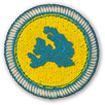

There is something magical about the Westfjords, the region that could arguably be labelled "Iceland's best kept secret". Isolation has preserved the region in a relatively unspoiled wilderness, making it a must-see for any serious explorers.
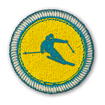

It's all about beautiful contrasts in the North, a land where long valleys and peninsulas are interspersed with big mountains, lava fields and smooth hills carved out by powerful rivers. Go big or go home!


If drifting through picturesque fjords from one warm town to the next is your cup of tea, head to the East. It is home to the country's largest forest, lush farmlands and even the mysterious lake monster in Lagarfljot.
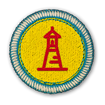

What's so cool about Reykjanes? Not only is it where most visitors set foot in, a geothermal wonder and the home of the spectacular Blue Lagoon, but also a place where lighthouses outnumber villages.
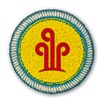

If the regions were pop songs, the South would probably be the chart-topping hit, since it is renowned for its beauty and the home of some o f the country's most visited tourist attractions.


